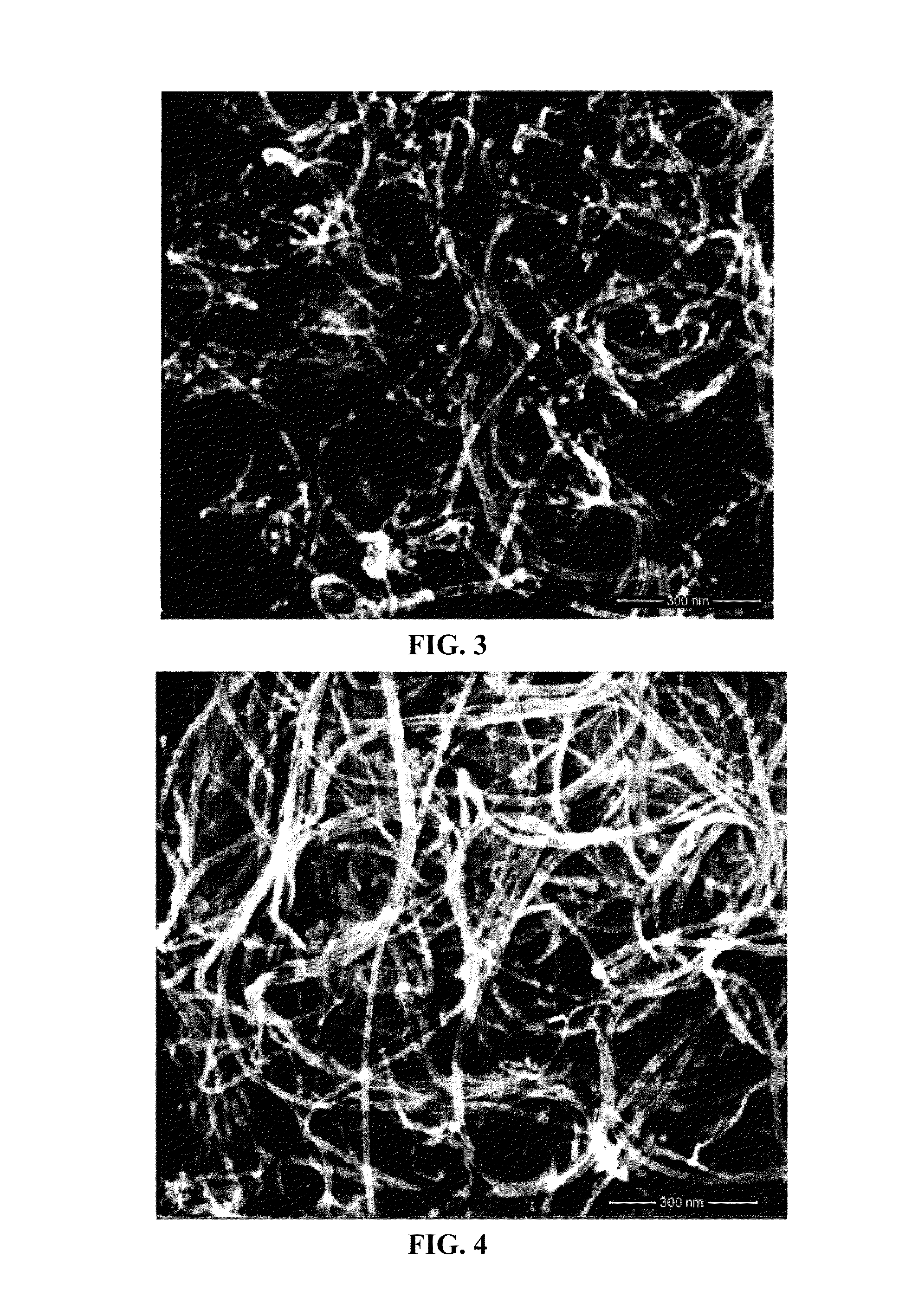Method and synthesis reactor for producing carbon nanotubes
a carbon nanotube and synthesis reactor technology, applied in physical/chemical process catalysts, furnaces, gas-gas reaction processes, etc., can solve problems such as saving production costs, and achieve the effects of improving catalyst utilization rate, high purity, and saving production costs
- Summary
- Abstract
- Description
- Claims
- Application Information
AI Technical Summary
Benefits of technology
Problems solved by technology
Method used
Image
Examples
example 1
[0039]The red mud used in the example is a waste product generated in the industrial production by bayer process of aluminum. A mass percentage of the total iron in the red mud is 25.21%
[0040]The red mud was dried for 2 hours at 105° C.; then the red mud was smashed and sieved by a 200-mesh sieve to yield a catalyst.
[0041]N2 was introduced from the air inlet device 7 for 30 minutes before the reaction. 20 g of the catalyst was added into the feeder 3, and was introduced into the synthesis reactor from the catalyst inlet 4. A fluidized bed of the main reactor was heated to 700° C., and a mixed gas of propylene and nitrogen was introduced into the main reactor; the catalyst was insufflated into the main reactor 1 by the mixed gas to yield the carbon nanotubes. A ratio of nitrogen to propylene in the mixed gas is 1:0.5. A flow rate of the mixed gas is 0.3 m / s. The reaction lasted for an hour and produced 75 g of carbon nanotubes which were shown in FIG. 2.
example 2
[0042]The red mud used in the example is a waste product generated in the industrial production by bayer process of aluminum. A mass percentage of the total iron in the red mud is 36.69%
[0043]The red mud was dried for 4 hours at 102° C.; then the red mud was smashed to yield a catalyst.
[0044]N2 was introduced from the air inlet device 7 for 20 minutes before the reaction. 20 g of the catalyst was added into the feeder 3, and was introduced into the synthesis reactor from the catalyst inlet 4. A fluidized bed of the main reactor was heated to 900° C., and a mixed gas of methane and nitrogen was introduced into the main reactor; the catalyst was insufflated into the main reactor 1 by the mixed gas to yield the carbon nanotubes. A ratio of nitrogen to methane in the mixed gas is 1:0.8. A flow rate of the mixed gas is 0.5 m / s. The reaction lasted for an hour and produced 91 g of carbon nanotubes which were shown in FIG. 3.
example 3
[0045]The red mud used in the example is a waste product generated in the industrial production by bayer process of aluminum. A mass percentage of the total iron in the red mud is 44.71%
[0046]The red mud was dried for 1.5 hours at 109° C.; then the red mud was smashed to yield a catalyst.
[0047]N2 was introduced from the air inlet device 7 for 60 minutes before the reaction. 20 g of the catalyst was added into the feeder 3, and was introduced into the synthesis reactor from the catalyst inlet 4. A fluidized bed of the main reactor was heated to 850° C., and a mixed gas of ethylene and nitrogen was introduced into the main reactor; the catalyst was insufflated into the main reactor 1 by the mixed gas to yield the carbon nanotubes. A ratio of nitrogen to ethylene in the mixed gas is 1:0.6. A flow rate of the mixed gas is 0.4 m / s. The reaction lasted for an hour and produced 103 g of carbon nanotubes which were shown in FIG. 4.
[0048]According to different requirements, the synthesis rea...
PUM
| Property | Measurement | Unit |
|---|---|---|
| temperature | aaaaa | aaaaa |
| temperature | aaaaa | aaaaa |
| temperature | aaaaa | aaaaa |
Abstract
Description
Claims
Application Information
 Login to View More
Login to View More - R&D
- Intellectual Property
- Life Sciences
- Materials
- Tech Scout
- Unparalleled Data Quality
- Higher Quality Content
- 60% Fewer Hallucinations
Browse by: Latest US Patents, China's latest patents, Technical Efficacy Thesaurus, Application Domain, Technology Topic, Popular Technical Reports.
© 2025 PatSnap. All rights reserved.Legal|Privacy policy|Modern Slavery Act Transparency Statement|Sitemap|About US| Contact US: help@patsnap.com


